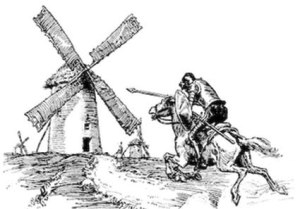Last year we did a thing we don’t do very often – told you about a complaint that had been filed before any decision had been issued, in the case of Klinger v. Conan Doyle Estate. The issue was whether the characters of Holmes and Watson were in the public domain, or whether, since certain books were written after 1923 (the public domain cut-off date), the later character development somehow kept the whole personae under copyright protection. This summer, as we so thoughtfully predicted, the 7th Circuit ruled against the estate, calling their quest to extend copyright to 135 years “quixotic.”
The 7th Circuit Court of Appeals brought up a point that was a little surprising since it had little do with the public domain question, yet pleasantly timely.1And here fits nicely my latest plug to the upcoming INTA conference, When Trademark Rights Overlap, in Munich Germany on December 8th and 9th. I’m a member of the Program Committee, and so I invite, implore, request and cajole you to attend. See you there. Judge Posner seemed to offer sympathy to Conan’s estate for the theoretical problem of an author using the Doyle character in some unflattering light (like making him stupid or something), and how that might prevent a reader of the later work from ever going back to enjoy the original novels because he would be so turned off to this unsavory character. Posner suggested that under trademark law, the estate might have some claim, since trademark law does prevent dilution of the brand identity behind famous marks. If I had been the estate, I’d have been a bit frustrated by this passage, since it seemed to have written as an invitation down a path to success that was closed off to the estate since it never really used Holmes and that iconic silhouette as a trademark, at least not in the United States. And anyway, trademark couldn’t have protected the Holmesian personality elements, so the detour into dilution law seemed to be a strange one. In the end, however, Posner states that no such claim exists under copyright.
And yesterday, the U.S. Supreme Court refused to grant cert to hear an appeal. The case is closed, and the characters in Doyle’s novels as written prior to 1923 are free for the public to use. Presumably, then, so is Don Quixote.

Footnotes
| ↑1 | And here fits nicely my latest plug to the upcoming INTA conference, When Trademark Rights Overlap, in Munich Germany on December 8th and 9th. I’m a member of the Program Committee, and so I invite, implore, request and cajole you to attend. |
|---|


